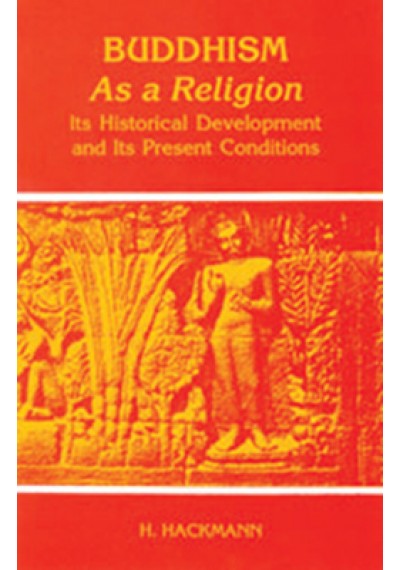PUBLICATION DETAIL

Buddhism as Religion
(Introduction Dr. S. Mukhopadhyaya)
| Author | : H. Hackmann |
| ISBN | :81-85616-27-2 |
| Price | : |
| Size | :23 cm |
| Year | :1994 |
| Format | :Hardbound |
| Description | :xxii+315 p., |
| Qty |
About the Book
Buddhism is one of the great religions of the world or to put it in a better way—Buddhism is a world religion to the true sense of the term. It is not only the living faith in a vast area of the world with increasing votaries till this last decade of the twentieth century, but also it assimilates within itself all the best elements of all religions, practised all over the world. Founded by Gautama the Buddha in the sixth century B.C., Buddhism spread almost all over Asia in very early times. This religion had a unique philosophy to preach—the philosophy of suffering and the emancipation from the sufferings. It started as a new school of philosophy, but very soon was developed as a creed. As it covered more and more areas, it went on assimilating local beliefs, practices and ways of life within itself, resulting in numerous variations in different areas.
The teachings of the Buddha as enshrined in the canons of different sects of the religion have been studied and the profound philosophy propounded by him has been developed in the form of an intricate dialectics by later teachers. These have attracted the attention of scholars of very high order during the last-two centuries. A vast literature has grown around these noble thoughts. But the history of the spread of Buddhism as a religion and the changes it underwent in different distant lands have not been studied with due emphasis. The present work is an exception to the general trend of studying Buddhism as a philosophy as well as a religion. It examines very minutely the aspects of Buddhism as practised in countries such as Sri Lanka, Burma, Tibet, Thailand, China, Korea and Japan and fully brings out the impact of the religion on the life and culture of those countries. Besides, the work presents an assessment of Buddhism as a monastic religion and of both of its strength and weaknesses. That part of the study may not be very convincing but is very interesting, opening new avenues for further research in the subject.
About the Author






